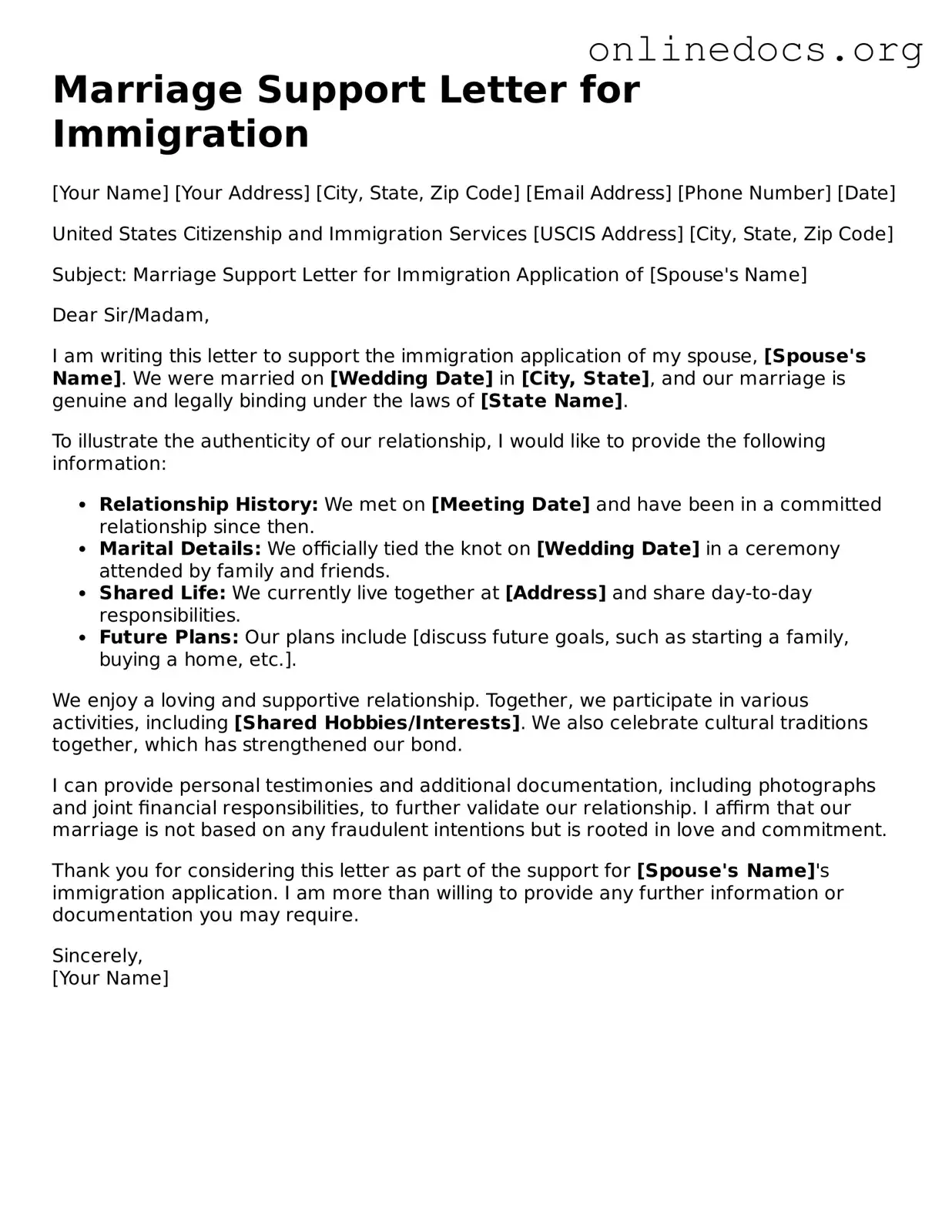The Marriage Support Letter for Immigration is akin to the Affidavit of Support. Both documents serve to affirm the legitimacy of a relationship, but the Affidavit of Support specifically demonstrates financial responsibility. This document is often required in immigration cases to show that the U.S. citizen or permanent resident can support their spouse financially, ensuring that the immigrant won't rely on public assistance. The Affidavit of Support is a legally binding contract, while the Marriage Support Letter is more of a personal testament to the relationship.
Another document similar to the Marriage Support Letter is the I-130 Petition for Alien Relative. This form is filed by a U.S. citizen or permanent resident to establish a qualifying family relationship with a foreign national. While the I-130 focuses on the legal aspects of the relationship, the Marriage Support Letter provides a personal narrative that can help convey the authenticity of the marriage. Both documents aim to facilitate the immigration process but approach it from different angles.
The Joint Sponsor Letter is also comparable to the Marriage Support Letter. When a primary sponsor does not meet the income requirements, a joint sponsor can submit this letter to affirm their willingness to support the immigrant financially. Similar to the Marriage Support Letter, it emphasizes the commitment to the relationship, but it focuses on financial backing rather than emotional support. Both documents aim to strengthen the case for immigration but in different contexts.
When considering parenthood and custody matters, a comprehensive understanding of supporting documents is essential. For instance, a Character Reference Letter for Child Custody serves a crucial role in illustrating a parent's capabilities and character. Such documentation is especially valuable, as it provides a third-party perspective on a parent's suitability for custody, emphasizing their dedication to being a nurturing caretaker. This aligns with the purpose of a Character Reference Letter for Child Custody form, which can significantly influence custody decisions by showcasing the parent's strengths and commitment to their child's well-being.
The Relationship History Letter shares similarities with the Marriage Support Letter as well. This document outlines the timeline and key events of a couple's relationship, providing context and evidence of its authenticity. Like the Marriage Support Letter, it serves to establish the legitimacy of the marriage in the eyes of immigration authorities. Both documents are narrative in nature, but the Relationship History Letter is more detailed regarding the couple's journey together.
The Affidavit of Relationship is another document that resembles the Marriage Support Letter. This affidavit is often written by friends or family members who can attest to the authenticity of the couple's relationship. While the Marriage Support Letter is typically authored by the spouse, the Affidavit of Relationship provides an external perspective. Both documents aim to support the legitimacy of the marriage, but they do so from different viewpoints.
The Personal Statement of Intent to Marry can also be compared to the Marriage Support Letter. This document is often used in fiancé visa applications and expresses the intent of the couple to marry. While the Marriage Support Letter confirms that a marriage has already taken place, both documents highlight the emotional commitment between partners. They serve to reassure immigration officials about the sincerity of the relationship.
Lastly, the Immigration Petition for Spouse is similar to the Marriage Support Letter in that it is part of the immigration process for married couples. This petition is a formal request to grant immigration status based on the marriage. While the Immigration Petition for Spouse focuses on legal eligibility, the Marriage Support Letter adds a personal touch, reinforcing the couple's commitment. Both documents work together to present a comprehensive picture of the relationship to immigration authorities.
